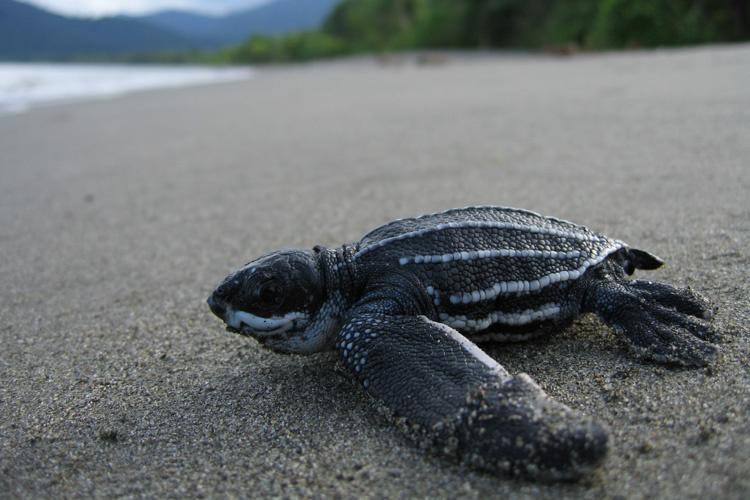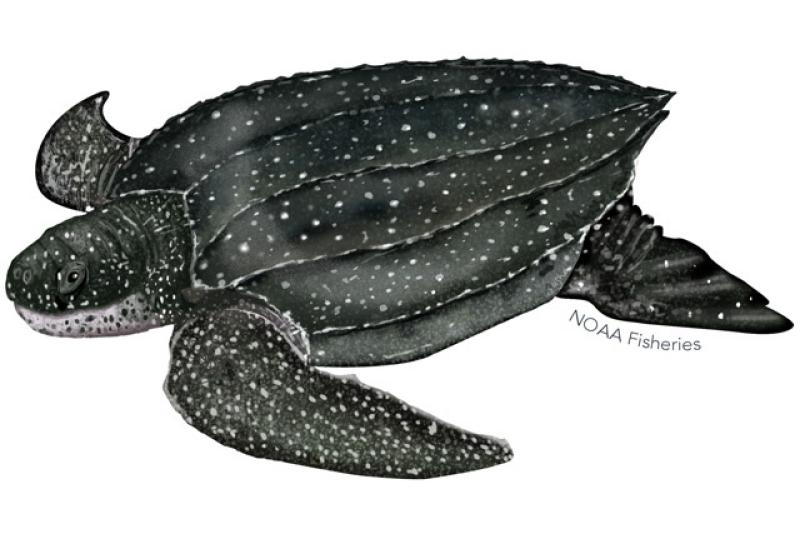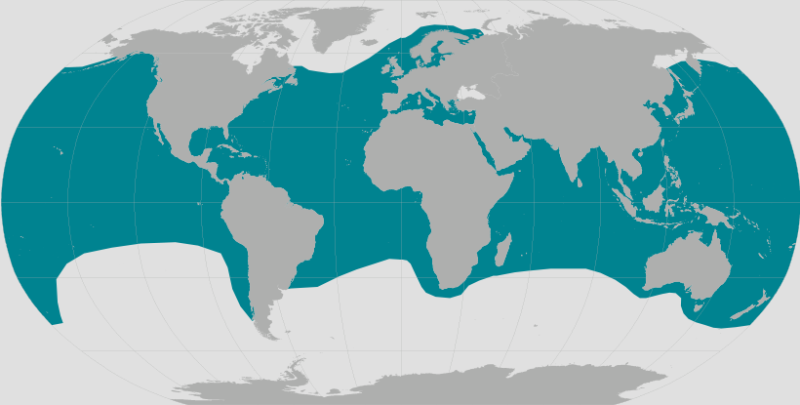Leatherback Sea Turtles
The Leatherback Sea Turtle (Dermochelys coriacea)
Species Description
- Leatherback sea turtles are the largest turtles in the world
- Leatherback sea turtles grow to be 750-1000 pounds
- Leatherback sea turtles are 5-6 feet long
- Leatherback sea turtles lay clutches of around 110 eggs
- Leatherback sea turtles migrate about 10,000 miles per year from foraging grounds to breeding grounds
- Leatherback sea turtles can dive deeper than any other sea turtle at 4,000 feet
- Leatherback sea turtles lack a traditional shell and have as the name implies a thick leathery skin with interwoven bones underneath
- Leatherback sea turtles can hold their breath for 85 minutes


Habitat and Range
- Leatherback sea turtles given their incredible amount of migration have a very large range mostly following food
- Leatherback sea turtles primarily nest in tropical and subtropical beaches
- Leatherback sea turtles have an average distance of 3,700 miles between foraging grounds and breeding grounds

Ecosystem Niche
- Leatherback sea turtles lack crushing and chewing plates
- Leatherback sea turtles feed on soft bodied prey like jellyfish and salps
- Leatherback sea turtles have barbs in the back of their mouth to keep jellyfish in place
- Leatherback sea turtles are primary predators
Cause of Decline
- The number one cause of leatherback decline is bycatch
- Leatherbacks both the grown adults and their eggs are directly hunted
- Leatherbacks are killed every year by vessel strikes
- Climate change massively threatens leatherbacks through beach erosion from rising sea levels, higher temperature altering the ratio of males to females, and increasingly intense storms washing out nests
Ecosystem Importance
- As a primary predator they keep the populations of the abundant jellyfish in check
- If they went extinct the population of jellyfish would explode causing overcrowding and depletion of other food sources for other animals
Conservation Efforts
- NOAA and The US Fish and Wildlife Service have been working together since 1977 to protect the leatherbacks
- NOAA is reconstructing and protecting beaches for nesting
- NOAA is developing turtle exclusion devices for fishing gear
- NOAA is designating and protecting critical breeding grounds
Biogeography in Conservation
- NOAA has been tracking leatherbacks for years to learn more about their movement patterns to better protect vital areas
- NOAA is also studying foraging patters to understand how they interact with their prey
How to Help
- Reduce waste in the oceans to keep beaches clean so the turtles can nest
- Do not approach or touch sea turtles
- Reduce consumption of seafood to reduce fishing to reduce bycatch
- If you go on a beach vacation look up the number of a local wildlife protection organization that can help a turtle in distress if you see one
- As always spread the word! The more people that know about the issues facing the leatherback sea turtle the more people can help protect them!!
Comments
Post a Comment